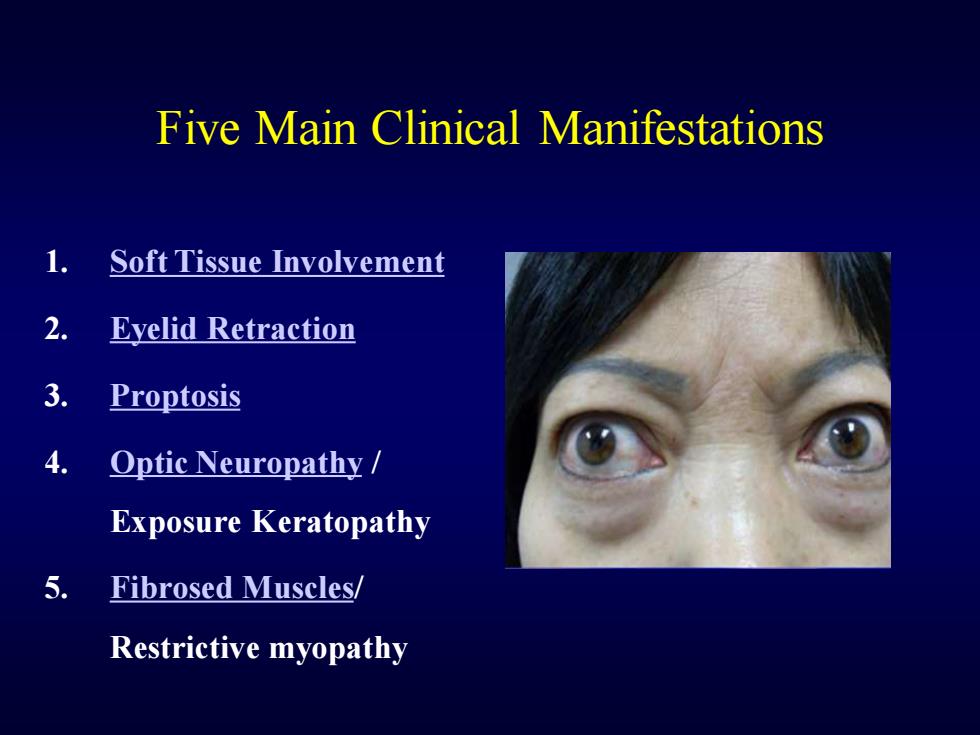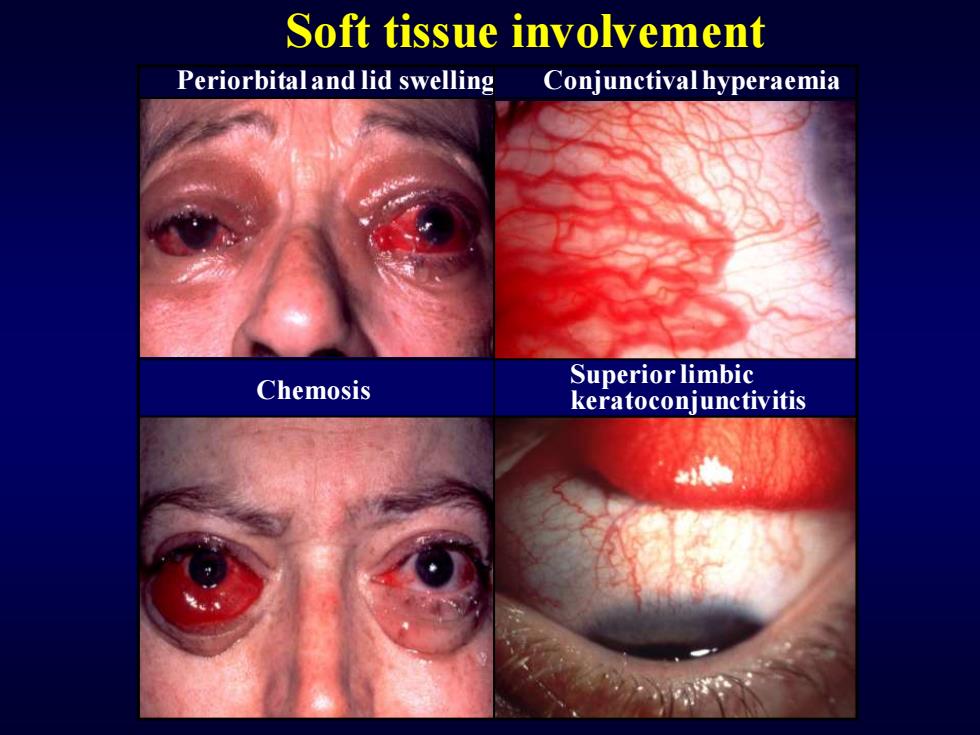
Enlargement of extraocular muscles The stimulated fibroblasts produce glycosaminoglycans (GAGs)which cause the muscle to swell Muscle size may increase by up Swollen muscles to 8 times The swollen muscles occupy orbital space and can compress Compression the optic nerve ofoptic nerve These swollen muscles can at apex oforbit cause a forward propulsion of the globe (proptosis)so that the eyelids do not cover well and Swollen muscle(medialrectus) eyes dry out,causing exposure keratopathy
Enlargement of extraocular muscles • The stimulated fibroblasts produce glycosaminoglycans (GAGs) which cause the muscle to swell • Muscle size may increase by up to 8 times • The swollen muscles occupy orbital space and can compress the optic nerve • These swollen muscles can cause a forward propulsion of the globe (proptosis) so that the eyelids do not cover well and eyes dry out, causing exposure keratopathy Swollen muscles Compression of optic nerve at apex of orbit Swollen muscle (medial rectus)

Five Main Clinical Manifestations 1. Soft Tissue Involvement 2. Eyelid Retraction 3. Proptosis 4. Optic Neuropathy Exposure Keratopathy 5. Fibrosed Muscles/ Restrictive myopathy
Five Main Clinical Manifestations 1. Soft Tissue Involvement 2. Eyelid Retraction 3. Proptosis 4. Optic Neuropathy / Exposure Keratopathy 5. Fibrosed Muscles/ Restrictive myopathy

Soft tissue involvement Periorbitaland lid swelling Conjunctival hyperaemia Superior limbic Chemosis keratoconjunctivitis
Soft tissue involvement Periorbital and lid swelling Chemosis Conjunctival hyperaemia Superior limbic keratoconjunctivitis

Signs of eyelid retraction Occurs in about 50% Bilaterallid retraction Bilaterallid retraction No associated proptosis.Bilateral proptosis Unilateral lid retraction ·Lid lag in downgaze Unilateral proptosis
Signs of eyelid retraction Occurs in about 50% • Bilateral lid retraction • No associated proptosis • Bilateral lid retraction • Bilateral proptosis • Lid lag in downgaze • Unilateral lid retraction • Unilateral proptosis

Proptosis Occurs in about 50% Uninfluenced by treatment of hyperthyroidism Axial and permanent in about 70% May be associated with choroidal folds Treatment options ·Systemic steroids ·Radiotherapy Surgical decompression
Proptosis Treatment options • Systemic steroids • Radiotherapy • Surgical decompression • Occurs in about 50% • Uninfluenced by treatment of hyperthyroidism Axial and permanent in about 70% May be associated with choroidal folds